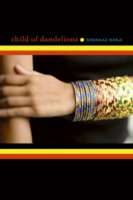
Child of Dandelions
Written by Shenaaz Nadji
Boyds Mill Press, 2008, p. 214
ISBN: 978-1932425934
Safely home in the comfort of the sitting room, Sabine heard on the radio that President Idi Amin had had a dream. In the dream God told him to expel all foreign Indians from Uganda. (p. 10)
Fifteen-year-olds Sabine and Zena are best of friends. Together since childhood, the two Uganda-born girls played together as children and now confide in each other as teens. Their circumstances, however, are very different. Sabine is the daughter of a wealthy Indian businessman while Zena is the daughter of one of the men who work the farm for Sabine’s father. When Idi Amin takes power in 1972, their friendship is tested as they find they are on different sides of the political and ethnic lines drawn by “Dada Amin.” While Sabine’s family is Ugandan by birth, they are ethnically Indian, and in jeopardy as those who are implementing the law of expelling foreign-born Indians do not notice or care about the difference. It is not until her uncle disappears, however, that Sabine and her parents believe they may actually be in grave danger and their forced journey begins. Based on actual events, Child of Dandelions is an excellent text for middle school readers to gain insight into the turmoil and terror of Uganda’s struggles under Amin’s leadership.
The book presents the growing tension of Idi Amin’s political policies and its resulting division of people by showing the dissolution of Sabine’s and Zena’s friendship. Zena becomes more enamored with the President and his policies and Sabine becomes their target, which parallels the division of people across socioeconomic and racial lines within the country. The novel accurately portrays the political turmoil just prior to the genocide and terror that occurred shortly after the expulsion period of the novel. At the same time, the novel gives younger readers the distance they may need to accommodate the reality that political will or change can often be a violent pendulum swing rather than a gradual readjustment to the status quo. The author’s note at the end gives information about the history of the Ugandan Indians prior to their expulsion from Uganda, and would make a great introduction to the novel and to a study on the time period in Uganda or to the topic of human and civil rights.
For middle school students, Child of Dandelions would make a great companion to texts such as A Long Way Gone: Memoirs of a Boy Soldier (Ishmael Beah, 2008) and Zlata’s Diary (Zlata Filipovic, Christina Pribichevich-Zoric, & Janine Giovanni, 2006) to address themes about political oppression and genocide. If studying civil and human rights, additional texts could include A Tugging String: Growing Up During the Civil Rights Era (David Greenburg, 2008); Sold (Patricia McCormack, 2006), and Iqbal (Francesco D’Adamo, 2005). While these texts focus on individuals fighting for their human rights, Child of Dandelions would present readers with the issues about human rights based on ethnicity.
Shenaaz Nadji was born in Mombasa, an island off the African coast and as a child visited relatives in Uganda. Her visits stopped once her relatives were expelled from Uganda in 1972. Currently living in Canada, Nadji received her MFA at Vermont College and is a writer of other children’s and young adult books. Her website is http://www.snanji.com/, where more information about her books and life can be found.
Holly Johnson, University of Cincinnati, Cincinnati, OH
WOW Review, Volume IV, Issue 2 by Worlds of Words is licensed under a Creative Commons Attribution-NonCommercial-ShareAlike 4.0 International License. Based on work at https://wowlit.org/on-line-publications/review/iv-2/

I hadn’t read this review before; thank you so much for appreciating the essence of Jacob’s story.
Thank you. We’re glad you found it! Our goal with WOW Review is to make global literature more visible so we are thrilled it “worked” and you found the review insightful.
Susan Corapi & Prisca Martens, Co-Editors, WOW Review